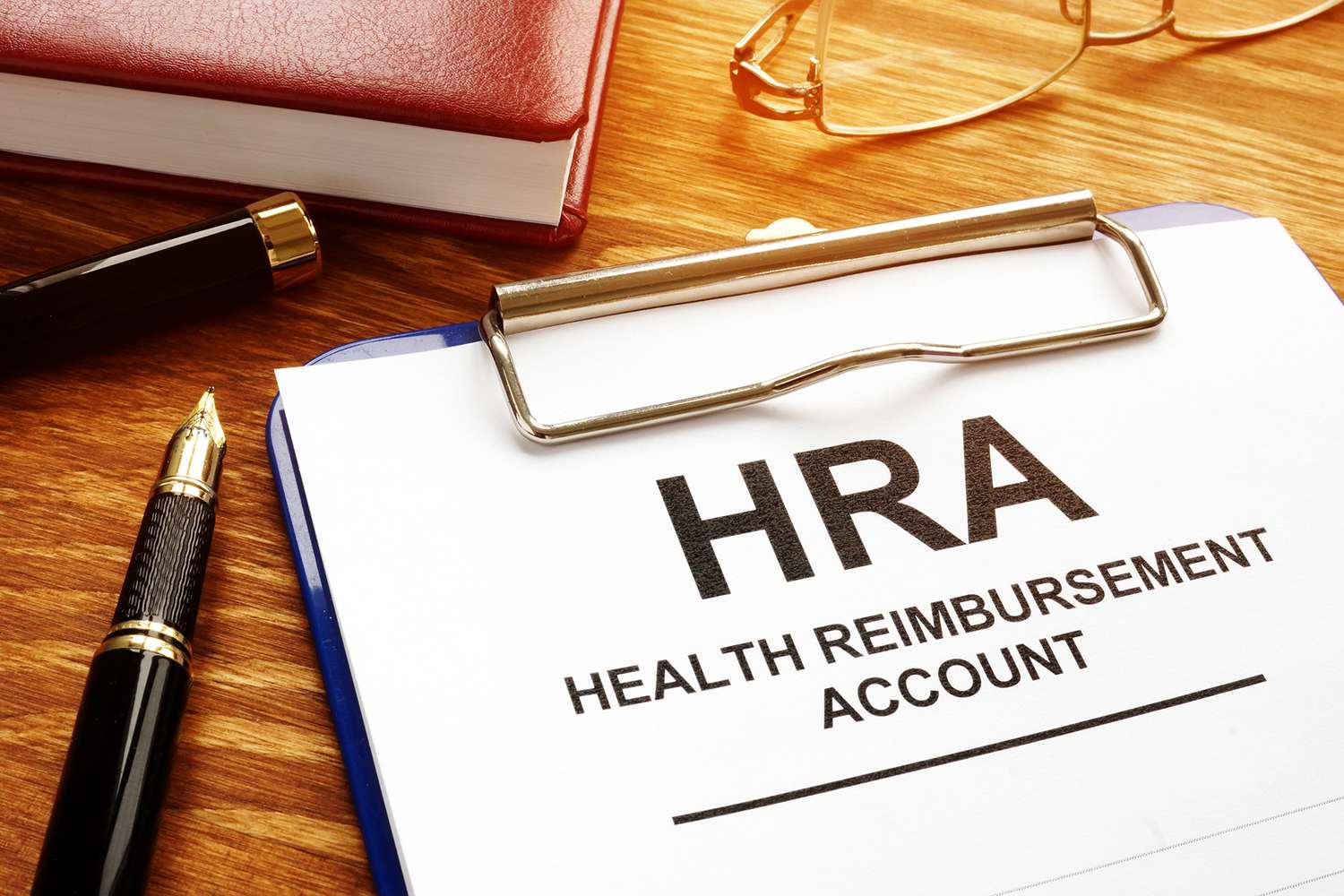A Health Reimbursement Arrangement (HRA) is a type of employer-funded healthcare benefit that reimburses employees for eligible medical expenses. HRAs are designed to provide employees with tax-free money to pay for qualified medical costs.
They allow employers to contribute to their employees’ healthcare expenses while also giving employees flexibility in how they use the funds. Health Reimbursement Arrangements, also known as HRAs, are employer-funded healthcare benefits that reimburse employees for eligible medical expenses, providing tax-free money for qualified medical costs and allowing both employers and employees to have more control over healthcare spending.
HRAs offer flexibility in how employees can use the funds and give employers the ability to contribute to their employees’ healthcare expenses.

What Is A Health Reimbursement Arrangement?
In this blog post, we will delve into the world of Health Reimbursement Arrangements (HRAs) and explore their definition and benefits for both employers and employees. Understanding HRAs is essential for businesses and individuals alike, as these arrangements can have a significant impact on healthcare coverage and expenses. So, let’s begin by answering the question: What is a Health Reimbursement Arrangement?
Definition And Concept
A Health Reimbursement Arrangement, commonly known as an HRA, is a type of employer-funded healthcare benefit plan. It provides employees with a specific allowance of money to use towards qualified medical expenses. Unlike traditional health insurance plans, HRAs do not involve purchasing a specific insurance policy.
HRAs are designed to offer more flexibility to both employers and employees. Instead of offering a one-size-fits-all insurance plan, employers can tailor HRAs to suit the specific needs and preferences of their workforce.
Here’s a high-level overview of how an HRA works:
- The employer contributes funds to the HRA based on a predetermined allowance or allowance range.
- Employees can then use these funds to pay for eligible healthcare expenses, such as deductibles, copayments, prescription drugs, and other out-of-pocket costs.
- Employees are typically reimbursed for their expenses by submitting valid documentation, such as receipts or explanation of benefits (EOBs), to the HR department.
Benefits For Employers
Implementing an HRA offers numerous benefits for employers:
- Cost control: HRAs allow employers to set a budget for healthcare expenses by determining the amount of money they contribute to each employee’s HRA. This helps manage healthcare costs effectively.
- Flexibility: With HRAs, employers have the flexibility to choose the types of expenses that are eligible for reimbursement. This enables them to align the benefit with their desired strategies and promote cost-conscious healthcare choices among employees.
- Retirement-friendly: Employer contributions to HRAs are generally tax-deductible and do not count as taxable income for employees. This makes HRAs an attractive option for retirement planning as unused funds can roll over into the next plan year or accumulate over time.
- Recruitment and retention: HRAs can be a valuable recruitment and retention tool, as they provide employees with a personalized healthcare benefit that meets their specific needs. It also demonstrates that employers care about their employees’ well-being.
Benefits For Employees
Employees can enjoy several advantages with an HRA:
- Choice and control: With HRAs, employees have more control over their healthcare decisions. They can choose the healthcare providers and treatments that best suit their needs using the HRA funds available to them.
- Tax savings: Contributions made by the employer to an HRA are typically tax-free for employees. In addition, eligible medical expenses paid for with HRA funds are tax-free as well.
- Flexibility: Unlike traditional health insurance plans, HRAs offer employees flexibility in how they allocate their healthcare expenses. They can use the funds towards deductibles, copayments, prescriptions, or other qualifying medical expenses.
- Portability: In many cases, HRAs are portable, which means employees can take their funds with them when they change jobs or retire. This provides continuity of coverage and eliminates the worry of losing unused funds.
Types Of Health Reimbursement Arrangements
In the world of healthcare, there are several types of Health Reimbursement Arrangements (HRAs) that can provide employees with a way to cover their medical expenses. Each type of HRA has its own unique features and benefits. In this blog post, we will explore the different types of HRAs, including Integrated HRAs, Stand-alone HRAs, and Retiree HRAs.
Integrated Hras
An Integrated HRA is a type of HRA that is linked to a group health insurance plan. It works in conjunction with the insurance plan to provide employees with additional and reimbursable medical expense benefits. Integrated HRAs are typically offered as part of a comprehensive benefits package by employers.
Integrated HRAs are designed to work alongside a high-deductible health plan (HDHP). They allow employees to have the best of both worlds: a lower premium and a higher deductible, while still receiving financial assistance for their out-of-pocket medical expenses.
Stand-alone Hras
A Stand-alone HRA, as the name suggests, is not connected to a group health insurance plan. Instead, it is offered as a separate benefit to employees by their employer. With a Stand-alone HRA, employers fund the account, and employees can use the funds to pay for qualified medical expenses.
Stand-alone HRAs give employers more control over their healthcare spending, as they can set specific parameters and restrictions on how the funds can be used. Employees benefit from this arrangement by having a tax-advantaged account that they can use to cover eligible medical expenses.
Retiree Hras
Retiree HRAs are a type of HRA specifically designed to assist retirees with their healthcare costs. These HRAs are typically offered by employers as a way to provide retiree employees with continued access to healthcare coverage after retirement.
Retiree HRAs offer retirees financial support for their healthcare expenses, including out-of-pocket costs such as premiums, copayments, and deductibles. Since retirees often face higher healthcare costs than active employees, Retiree HRAs can be an invaluable resource in helping them maintain their health and well-being.
How To Set Up And Administer A Health Reimbursement Arrangement
Setting up and administering a Health Reimbursement Arrangement (HRA) is a crucial aspect of providing employee benefits and managing healthcare costs. By understanding the steps involved in designing, implementing, and maintaining an HRA, you can ensure smooth operations while maximizing the benefits for both your company and your employees. In this article, we will guide you through the essential aspects of setting up and administering an HRA, including designing the HRA, establishing eligibility and enrollment procedures, handling documentation and compliance, managing funding and reimbursement, tracking and reporting expenses, and effectively communicating with employees.
Designing The Hra
Designing an HRA involves structuring the plan to meet your company’s specific needs and goals. This includes determining the contribution limits, coverage options, and eligible expenses. By considering factors such as average healthcare costs, employee demographics, and budget constraints, you can design an HRA that strikes the right balance between providing sufficient healthcare coverage and managing costs effectively.
Eligibility And Enrollment
Establishing clear eligibility criteria and enrollment procedures is crucial for an efficient HRA program. You need to define the employees who qualify for participation in the HRA, such as full-time employees or employees who meet certain tenure requirements. Communicating these eligibility criteria to your employees helps set expectations and ensures fairness in the enrollment process. Additionally, providing a simple and user-friendly enrollment process, ideally through an online platform, streamlines the administration and reduces potential errors or delays.
Hra Documentation And Compliance
Compliance with applicable laws and regulations is essential when administering an HRA. Ensure that you have all the necessary documents in place, such as a plan document outlining the HRA’s terms and conditions, a summary plan description (SPD) for employees, and any required notices or disclosures. Regularly review these documents to ensure they remain up-to-date with any legal changes. It is also advisable to consult with legal counsel or benefits consultants specializing in employee benefits to ensure compliance with all relevant regulations.
Hra Funding And Reimbursement
Funding and reimbursement processes are critical components of an HRA. Determine how you will fund the HRA, whether through employer contributions, employee salary deductions, or a combination of both. Establish clear guidelines regarding eligible expenses and reimbursement procedures. Develop robust processes for employees to submit expense claims, and ensure prompt and accurate reimbursement. Consider implementing an online claims submission and reimbursement system to simplify the process and enhance efficiency.
Tracking And Reporting Expenses
Keeping track of HRA expenses and reporting them accurately is essential for monitoring plan costs and compliance. Implement a system to record and categorize eligible expenses, ensuring proper documentation is maintained for each expense claim. Regularly review expense reports and analyze spending patterns to identify any areas of concern or opportunities for cost-saving measures. Generating comprehensive reports that highlight HRA usage and financial metrics can provide valuable insights for plan evaluation and decision-making.
Communicating With Employees
Effective communication is key to the success of an HRA program. Clear and concise communication with employees ensures that they understand the benefits offered, the eligibility criteria, reimbursement procedures, and any important updates or changes to the plan. Utilize various communication channels, such as email, company intranet, or employee portals, to reach out to employees and provide the information they need. Regularly communicate with employees to address any questions or concerns and maintain a transparent and supportive environment.

Frequently Asked Questions On Health Reimbursement Arrangement
What Is A Health Reimbursement Arrangement?
A health reimbursement arrangement is a benefit plan in which employers reimburse employees for qualified medical expenses. It helps employees pay for healthcare costs not covered by insurance. It’s a flexible and tax-advantaged way to provide healthcare benefits to employees.
What Is Hra And How Does It Work?
HRA stands for House Rent Allowance. It is a component of salary given to employees to help cover their rental expenses. The amount is determined based on factors such as salary, location, and rent paid. HRA helps reduce the taxable income of the employee, resulting in tax benefits.
What Is The Health Reimbursement Arrangement Limit For 2023?
The health reimbursement arrangement limit for 2023 is yet to be announced. Stay updated for the latest information on the HRA limit in 2023.
What Is A Healthcare Reimbursement System?
A healthcare reimbursement system is a method of payment used in the healthcare industry. It involves the reimbursement of healthcare providers by insurance companies for services rendered to patients. This ensures that healthcare providers are compensated for their services and patients are not responsible for the full cost of their care.



